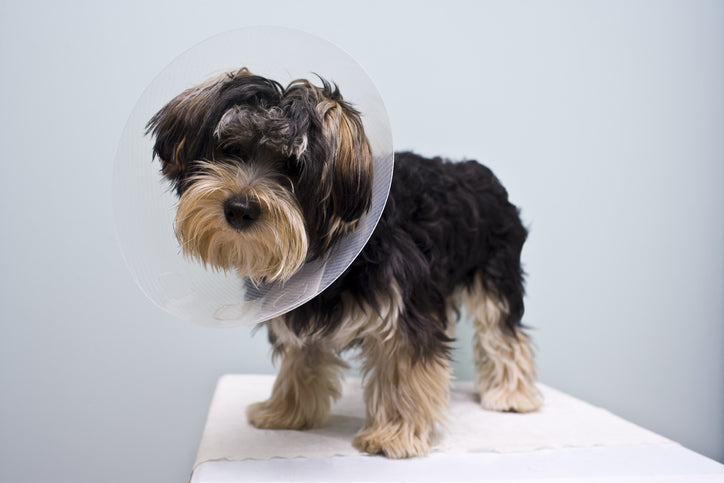How to Keep Your Dog from Licking Their Stitches After Surgery
After surgery, your dog will struggle with recovery. Even small procedures can make them uncomfortable. When dogs try to nurse themselves, they have a tendency to lick. Licking can clean an area, but it can do more harm than good when your dog has stitches. Let’s talk about how to keep your dog from licking their stitches after surgery.
Care of Surgical Incisions
Whether your dog has been spayed or neutered or had a cut sewed up, there are some basics to know about wound care in dogs.
Here’s some advice from VCA Hospitals, “Under no circumstances should a dog with a fresh surgical incision be allowed to run off-leash. Restrict your dog's activity for a period of 7-14 days, to allow the incision to begin healing. When you do take your dog outdoors, keep him on a short leash, and avoid long walks.”
In addition to the above, don’t let your dog jump or play too forcefully with other dogs. Stretching the incision area could cause the stitch to break and cause your dog to bleed. You should not bathe our dog or allow the incision area to become wet. While you might be compelled to do so, don’t apply anything to the healing area - no ointments and no alcohol or hydrogen peroxide. These powerful liquids may damage fragile, healing cells.
A healthy, healing incision should be normal color or slightly red or pink. You may see bruising on pale dogs. Within the first day of getting surgery, the wound may ooze a little blood, especially if your dog is more active. Once you’re home and settled, you might notice your dog paying too much attention to their stitches.
How to Keep Your Dog from Licking Their Stitches
Cone Collars
Cone collars are also known as Elizabethan collars or “e-collars.” This is the most common prescription after dogs get surgery. They are designed to wrap around your dog’s neck and head and keep your dog from licking their stitches. In general, dogs dislike the collar. Some dogs take several days to get used to wearing it. Dogs wearing an Elizabethan collar bump into things, have trouble eating, etc. So, be sure to monitor them while they are in recovery to make sure they are getting to eat or drink.
Shirts
Onesies and old t-shirts can be used to keep your dog from licking their stitches. Just put the shirt on them to cover the incision area! Dogs may give their new outfit the “slip.” So, be sure to supervise them. Also, remember to never let your dog sleep in their crate in clothing. It can put your dog at risk of injury or suffocation.
Bitter Tastes
There are some products you can buy from pet stores and online vendors that are to be applied around the incision (not on the incision) on unbroken skin to deter your dog from licking the area. Ingredients like bitter orange and other natural bitter flavors are used. Of course, you should be careful of any product your pet can ingest. When it comes to these types of products, proceed with caution.
What Your Vet Might Ask You to Do or Watch Out for After Surgery
Your veterinarian will tell you what to expect in the days after surgery. Here are some things you may need to do depending on your dog’s procedure:
- Take medications as directed.
- Clean the area of any discharge at least twice a day.
- Bring your dog back into the vet to have the stent (surgical drain) removed.
- Confine your dog to a crate or isolated space.
By knowing what you expect, you’ll be better able to help your dog after their surgery. Be prepared to care for your dog

